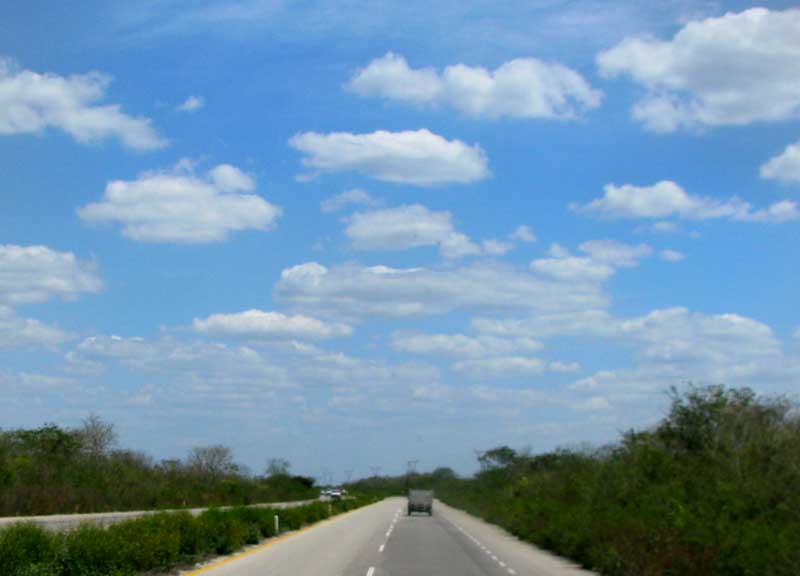Excerpts from Jim Conrad's
Naturalist Newsletter

from the March 27, 2011 Newsletter issued from Hacienda Chichen Resort beside Chichén Itzá Ruins, central Yucatán, MÉXICO; limestone bedrock, elevation ~39m (~128ft), ~N20.676°, ~W88.569°
CUMULUS HUMILIS CLOUDS
Nowadays on most afternoons small, cottony cumulus clouds appear in the sky. They're fair-weather clouds, not growing into anything that might produce rain. They materialize in the sky, travel a bit, and then vanish as newer clouds form around them. The other day as I returned from Mérida after dealing with visa issues, on the toll road toward Cancún I put my camera out the window and photographed what's shown above.
Our prevailing winds arrive from the east, so these cottony cumuli are coming toward us from the Cancún area. I visualize a fairly calm, relatively cool and humid layer of air streaming toward us from over the Caribbean, then when it passes over the Yucatán's afternoon-hot land, bubbles of warm surface-air rise up through it, cooling as they rise. If the rising bubbles are warm enough, maybe they'll form convection cells. When the air inside a bubble cools to a certain point, humidity in it condenses, forming the cloud.
Different kinds of cumulus clouds are recognized. In fact, the World Meteorological Organization, or WMO, regards "cumulus" as a "genus" category, exactly as with plants and animals, then there are various "species" of cumulus. Of cumulus clouds the WMO recognizes species such as Cumulus fractus, Cumulus mediocris, Cumulus mamma, and more. There are even cumulus varieties.
Our picture of clouds coming in from Cancún shows what's known as Cumulus humilis, "humilis" referring to something that's low or smallish. Cumulus humilis clouds are described as "fair weather clouds" with flat, light-grey bases and small, white-domed tops.